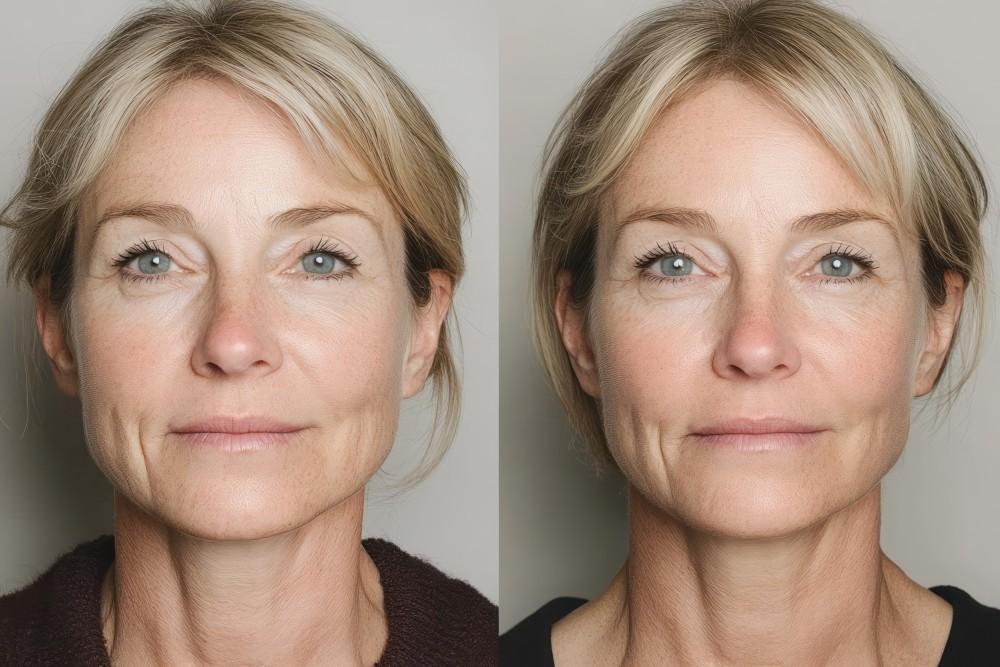
Hair Restoration with PRP: Fad or the Future?

Androgenetic alopecia (AGA) is the most common form of hair loss, affecting up to 60% of men and over 20 million women (50%) in the U.S. alone. When it comes to hair restoration at my Pasadena plastic surgery practice, I offer several approaches for addressing this loss, including the use of platelet-rich plasma (PRP).
Does PRP have staying power as a hair loss solution, or is it just a temporary fad? In this blog post, I’ll take a closer look.
Why & How Hair Loss Happens
Recent research suggests that multiple factors may contribute to hair loss, including genetic susceptibility, chronic inflammation, hormonal imbalance, psychological stress, immunological influences, and environmental pressures.
Across the spectrum of hair loss disorders, dysregulation of growth factors and cytokine pathways may ultimately be responsible for disruption of growth. The changes in molecular expression may alter the normal cycling dynamics and stem cell balances that eventually lead to loss over time1.
In male-pattern baldness, for example, circulating androgens, particularly dihydrotestosterone (DHT), bind to androgen receptors in the growth centers at the bottom ends of hair follicles, impede a number of pro-growth pathways, and simultaneously activate other inhibitory signals.
Where Restoration Methods Fall Short
Although hair restoration surgery is a long-lasting solution, there are significant drawbacks, such as repeated surgeries, increased risk of complications, and cumulative costs for most patients. Today, nearly 3.5 billion dollars are spent annually on hair loss therapies with varying degrees of patient satisfaction.
Responses to FDA-approved monotherapies, such as topical Minoxidil and oral Finasteride, have varied between 20% to 40%— and these products typically cause loss after their discontinuation.
How PRP Works
Since the 1970s, platelet-rich plasma (PRP) has received significant attention as a rich source of growth factors and cytokines for tissue repair and hemostasis. Peer-reviewed studies have investigated the clinical results of PRP to promote hair growth in the treatment of alopecia.2
Platelet-rich plasma contains a high number of platelet particles that are concentrated above levels normally found in whole blood. Experimental studies have demonstrated that activated platelets release a number of potent growth factors that include:
- Platelet-derived growth factor (PDGF)
- Fibroblast growth factor (FGF)
- Hepatocyte growth factor (HGF)
- Transforming growth factor (TGF)
- Vascular endothelial growth factor (VEGF)
- Epithelial growth factor (EGF)
- Insulin-like growth factor (IGF)
The paracrine action of growth factors and cytokines is generally believed to be responsible for angiogenesis, stem cell proliferation and differentiation, anti-apoptotic properties, anagen induction, cyclic growth and follicle development, and proliferation of dermal papilla cells through a number of stem cell niches within the follicle. To put it simply: growth.
Does PRP Hair Restoration Work?
Over the years, different commercial kits with FDA-approved Class I devices have been developed to deliver reproducible PRP dosages, purities, yields, and final compositions to address different types and stages of hair loss. Despite the growing interest in PRP efficacy and safety on hair growth, there is still not enough information for meta-analysis of current treatment protocols.
In 2015, Gkini’s group3 conducted an evidence-based review of 12 selected clinical trials. The outcomes in these trials were different as a result of variations in:
- Platelet dosages and concentrations
- Use of activators
- Employment of single-or-double spin cycles
- Centrifugation times and g-forces
- Controlled or randomized protocols
- PRP delivery techniques
As an off-label treatment for alopecia, larger randomized and controlled trials with approved devices are needed to ensure patient safety by adherence to quality control and assurance protocols.
My Research Efforts
With the support and approval of the Institute of Regenerative and Cellular Medicine Review Board (IRB), I am currently investigating the most optimal numbers of platelets, number and timing of sessions, and the variations between intradermal injections and microneedling approaches for the best outcomes. I recognize that clinical usage of PRP is in its early stage of development.
Currently, I am a member of the Eclipse Scientific Advisory Board on Hair Stimulation, International Society of Hair Restoration, President-Elect of the Aesthetic Stem Cell Society, and a consultant to a number of Regenerative Cell and PRP companies.
Our Approach to Hair Restoration
For the past 7 years, I have implemented a multi-targeting therapeutic approach in order to promote hair stimulation and growth. At the Sasaki Advanced Aesthetic Medical Center, I offer novel off-label therapies, such as PRP Injections, lipo- injections with nanofraction-derived regenerative cells, low-level laser light, and nutraceuticals with botanical growth factors, in addition to FDA-approved drugs such as Minoxidil and Finasteride.
If you would like to learn more about the hair restoration treatments I currently offer at my Pasadena plastic surgery practice, please contact us online or call (626) 268-4524.
1. Sasaki GH. Review of human hair follicle biology: Dynamics of niches and stem cell regulation for possible therapeutic hair stimulation for plastic surgeons. Aesthetic Plast Surg. 2019;43:253-266.
2. Sasaki GH. Hair biology and androgenetic alopecia: Diagnosis, neogenesis and management. Advances in Cosmetic Surgery. 2018;1:185-192.
3. Gkini MA, Kouskoukis AE, Rigopoulos D, et al. Platelet-rich plasma as a potential treatment for noncicatricial alopecias. Int J Trichology. 2015;7(2):54-63.
You Might Also Enjoy...


Am I a Candidate for Z-Wave?

5 Reasons to Include Facial Peels in Your Skincare Routine

What Kinds of Acne Can Dermaplaning Help With?

5 Complexion Perks of RF Microneedling


